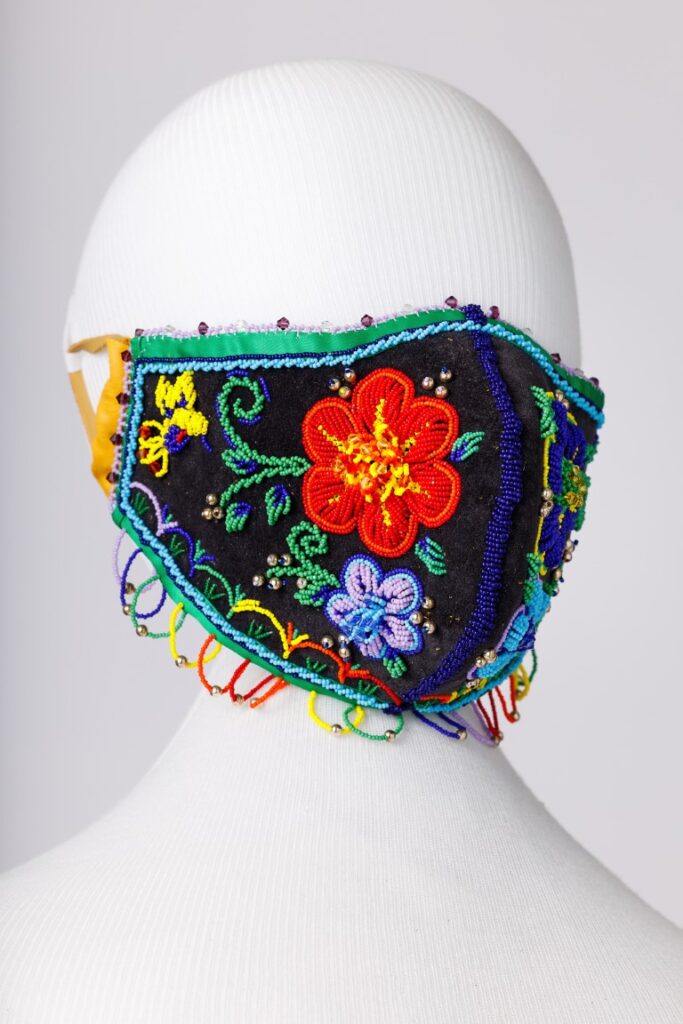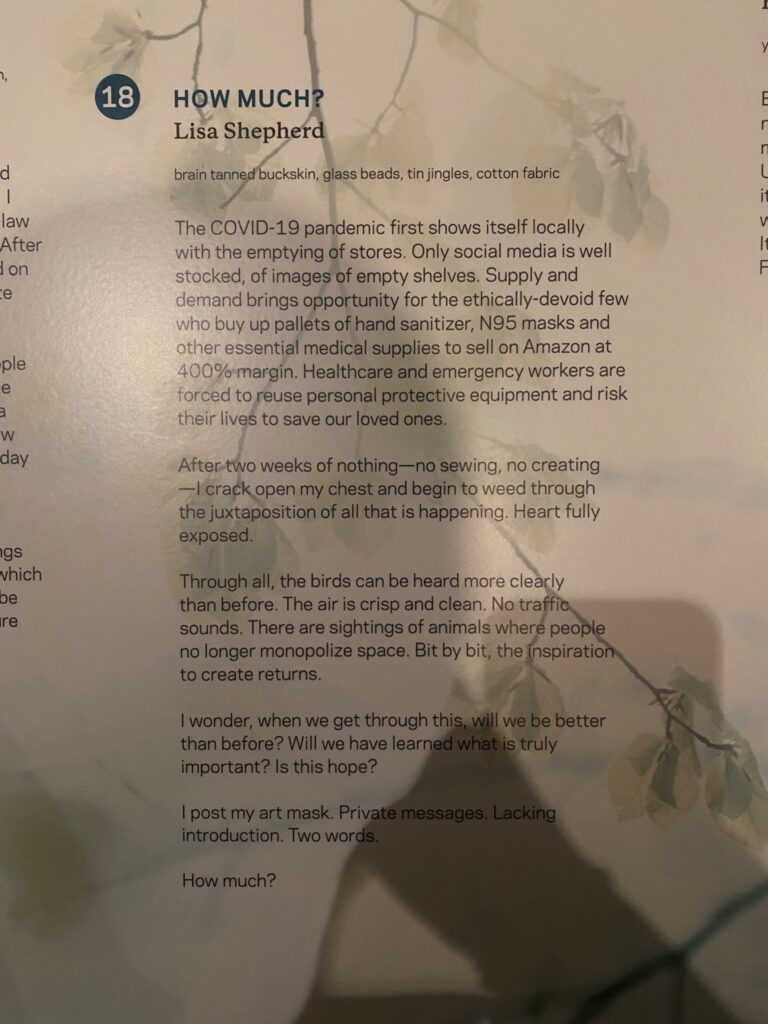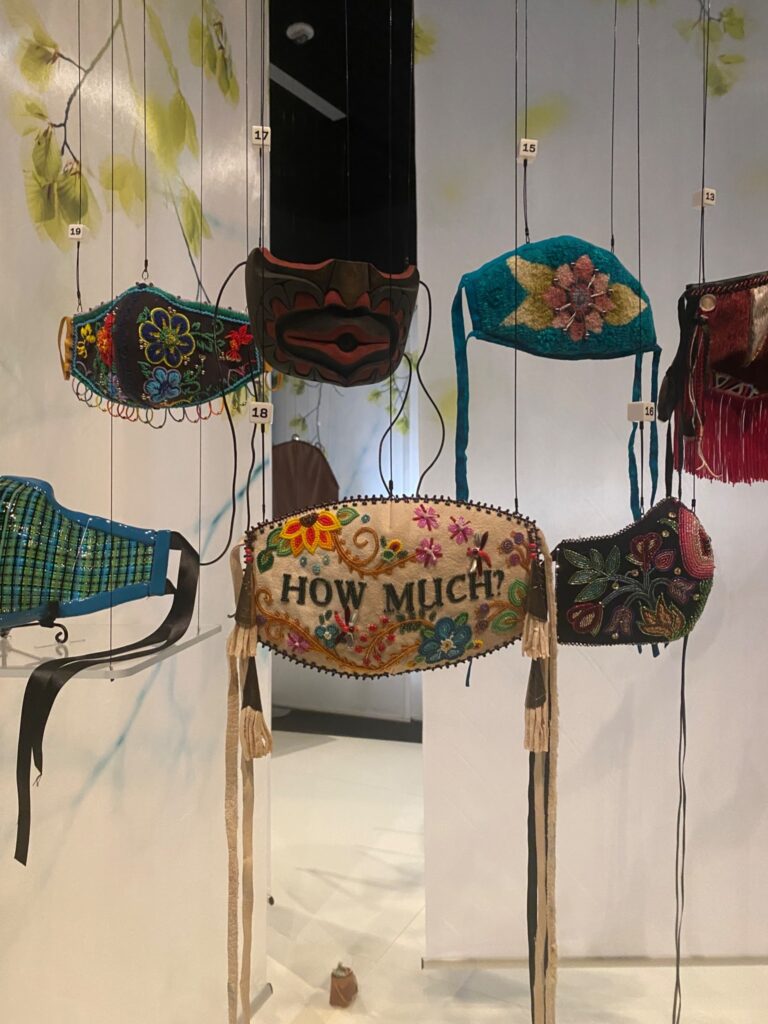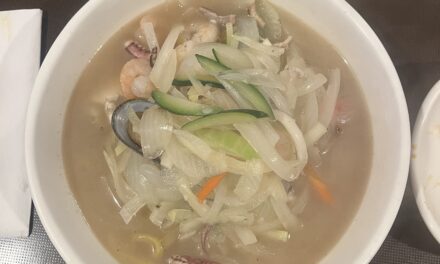“A really beautiful experience”
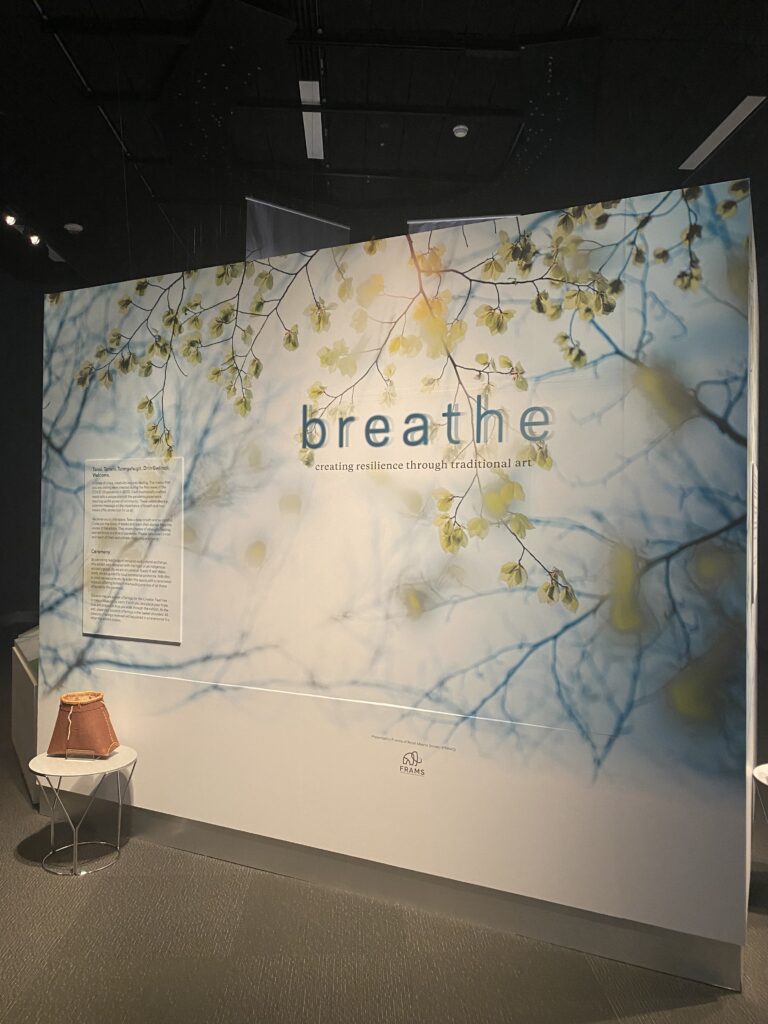
Review and photos by Abigail DiLullo
After a very long and hard year and a half, Alberta had made the unwise decision to reopen up non-essential services The silver lining was that this included the Royal Alberta Museum.
I had visited the new location only when it had first opened, but had visited the old museum tons of times as a kid. I hadn’t found the new museum to be particularly special, maybe due to the many years of school field trips and my familiarity with the exhibit. I thought the museum as a whole was quite underwhelming.
My partner had never been, and I did remember loving the bug exhibit, so on a rainy Saturday nearing the end of September, we paid the museum a visit. Upon waltzing through the human history section of the museum, we had the honour of stumbling across an exhibit I had no idea was even on; Breathe.
The Breathe exhibit is a creative Indigenous response to and reflection on the Covid-19 pandemic and the struggles it brought forward. These struggles, which are amplified within Indigenous communities, are highlighted through the artistic creation of Covid’s trademark accessory: masks. Breathe was created by two Metis artists, Lisa Shepherd and Nathalie Bertin, with the intentions of bringing together Canadian Indigenous and some non-Indigenous artists to connect and reflect over the past year and a half. The exhibit concentrates on how the artists coped with the first pandemic lockdown in March 2020 through their art.
As we stepped into the Breathe exhibit room, the atmosphere changed. The dark lighting of the human history exhibit had turned light and airy, as we read the wall introducing the exhibit. There was then a small basket labelled “Ceremony.” Breathe offered traditional Tobacco ties as prayer offerings for the creator to carry with you throughout the exhibit. The script on the wall above the Tobacco ties explained how to place your hopes, prayers, and love into these prayer ties while walking through Breathe and experiencing the art. As my partner and I both grabbed one, I was truly stunned by what was behind the wall.
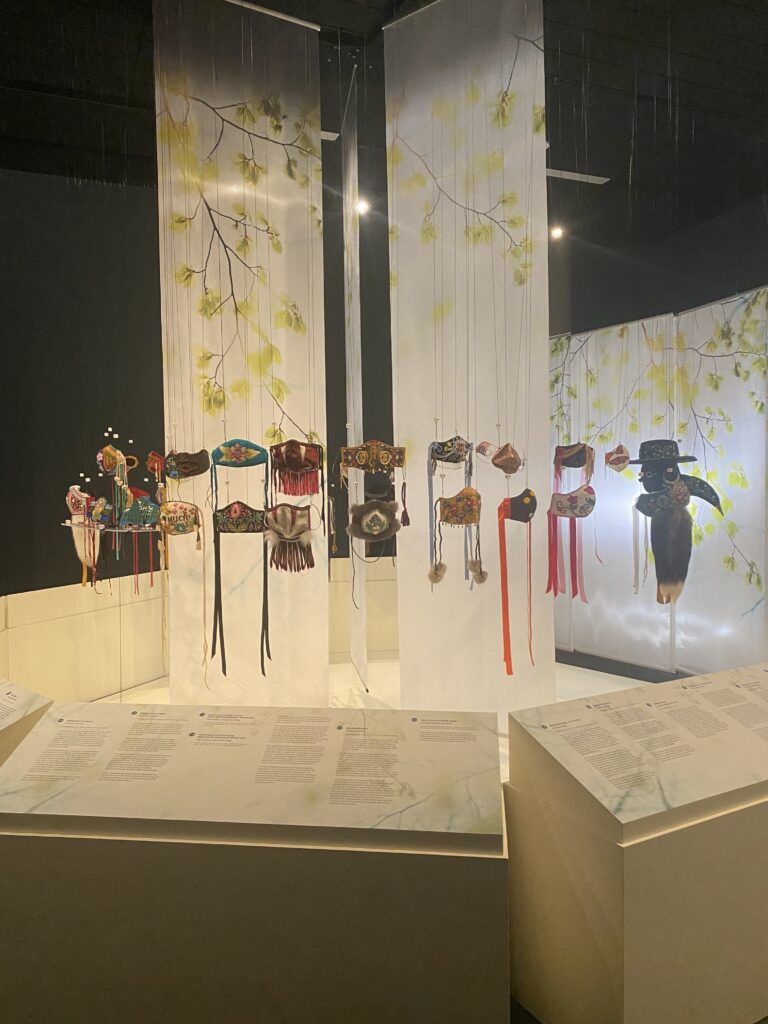
The exhibit ran from July 14 to October 11, and was included with the Royal Alberta Museums general admission. In light of the varying comfort level of the general public during the pandemic, Breathe was offered as a multi-platform experience meaning the whole exhibit was also available online for free.
45 hand crafted masks, made from materials reflecting diverse Indigenous cultural traditions, hung from the ceiling, arranged in a circle. Although not all of the artists were Indigenous, each mask stood out in its own way. Every mask reflected the resilience of the artist’s personal experiences with the Covid-19 pandemic.
Varying in shape, size, and material, all of the masks at first glance were truly mesmerizing, full of vibrant colours and unique textures. As the majority of the artists were Indigenous, a lot of the masks were made from traditional Indigenous materials such as caribou hide, deer hide, milkweed, and so much more. The majority of the Indigenous masks had the most beautiful and intricate traditional beadwork covering the masks. Although the beauty of the masks were complex, the overall environment of the exhibit offered simplicity, creating a comforting balance.
Each mask was accompanied by a description from the artist, and a list of the materials used in making the mask. Every mask had a story. The stories represented a different but collectively relatable experience or struggle emerging from the pandemic.
Some masks highlighted political unrest, resource shortages, mental health, but pretty much all the masks represented illness isolation, and anxiety, and how these artists connected and healed through their art from this isolation.
About five masks in, I started to get pretty emotional. The masks and their stories spoke about confusion, frustration, about feeling lost and stuck and hopeless. The masks spoke about uncertainty and fear. These really heavy topics would get anyone a little choked up and emotional. We have all lived through a really challenging time that still seems never ending and quite hopeless.
I think my favourite mask was “How Much” by Lisa Shepherd, one of the two originating Métis founders of Breathe. Choosing a favourite mask among so many wonderful pieces was hard, but I was immediately drawn to hers, hanging amidst the rest.
This actually was one of my partners’ favourites too. Her mask was made from brain tanned buckskin, glass beads, tin jingles, and cotton fabric. It was covered with vibrantly coloured beads in the shapes of flowers, and the words HOW MUCH? written in the middle with black beading.
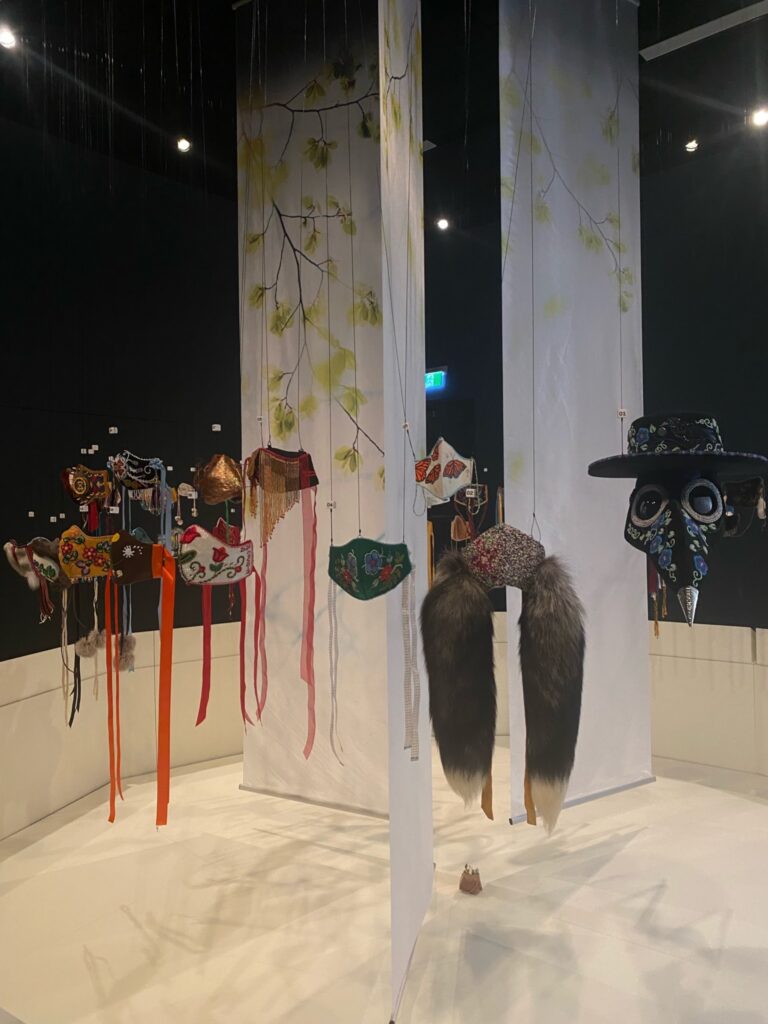
In her description, Shepherd spoke about how the pandemic first showed itself locally in her community with the emptying of stores. She spoke about supply and demand, the fear of the consumer who stocked up on medical supplies, taking away from healthcare professionals. She shared how after a few weeks of nothing, she decided to turn to art. She shares her vulnerability by asking “when we get through this, will we be better than before? Will we have learned what is truly important? Is this hope?”
But as I continued admiring the masks and reading more and more stories, I found myself getting even more emotional. Not only because of the collective hardship this pandemic brought, but because of this community’s gratitude. Indigenous communities were hit so much harder than other communities by the pandemic and continue to experience the disproportionate effects from Covid-19, especially in Alberta. Despite these struggles, what was most apparent through these masks was their resilience to keep going. Their gratitude to have the ability to keep going. Their gratitude to be able to revert back to their traditional teachings and turn to their art to guide them.
These artists persevered through the harsh reality of illness, isolation and death through each stitched bead and formed hide. These masks reminded me of hope, identity, connection, family, purpose, breath, and most importantly gratitude. At one point I stood there and thought to myself about how really lucky I was to be able to be standing in this museum, viewing this exhibit. And I held my Tobacco tie and I was grateful.
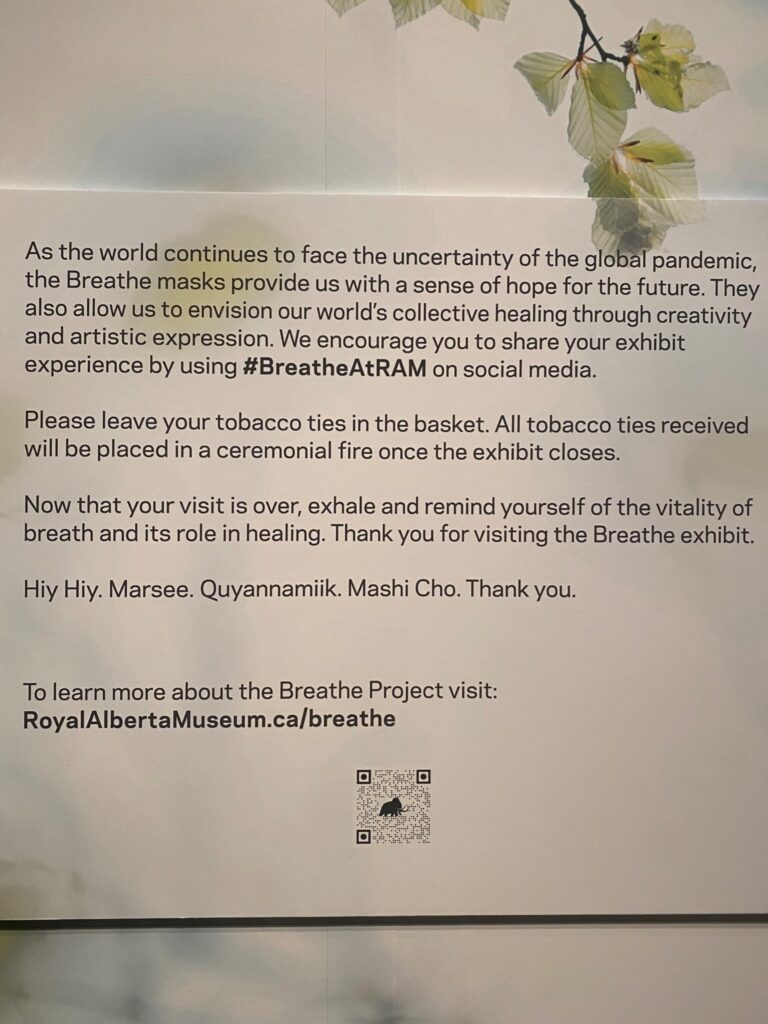
I think during the pandemic it’s become easy to be desensitized to illness, death, and other people’s well-being. The pandemic has somehow become political and opinionated and taken on a new meaning of its own. As we all have, I have struggled greatly during the past year and a half. It was comforting to read about other people who I have never even met fighting similar battles. It was inspiring to be able to experience their resilience through their art, as well as feeling inspired to create is something of my own.
The Breathe exhibit was special. I think I said out loud to my partner, “Okay, no actually THIS one is my favourite” every four minutes. My partner went through the exhibit faster than I did – he didn’t want to read every single description – but thoroughly enjoyed it nonetheless. The aura and the atmosphere in the space was still and calm. The space was comfortable. As we exited the exhibit, we were able to place our Tobacco ties in another basket that explained that when the exhibit closed our offerings would be burned in a ceremonial fire.
I cannot rave enough about Breathe and how enriching these pieces of art and often un-amplified Indigenous voices were. My only complaint was the lack of publicity that the exhibit had received. I was lucky enough to have seen Breathe by fluke, but I had not seen any other advertisements going on for this featured exhibit.
After doing a quick google search on Breathe, I had found some minimal media coverage on the exhibit when it had first opened, but not enough to do the exhibit justice in my opinion. It was a really beautiful experience and I was extremely grateful to have stumbled upon it.
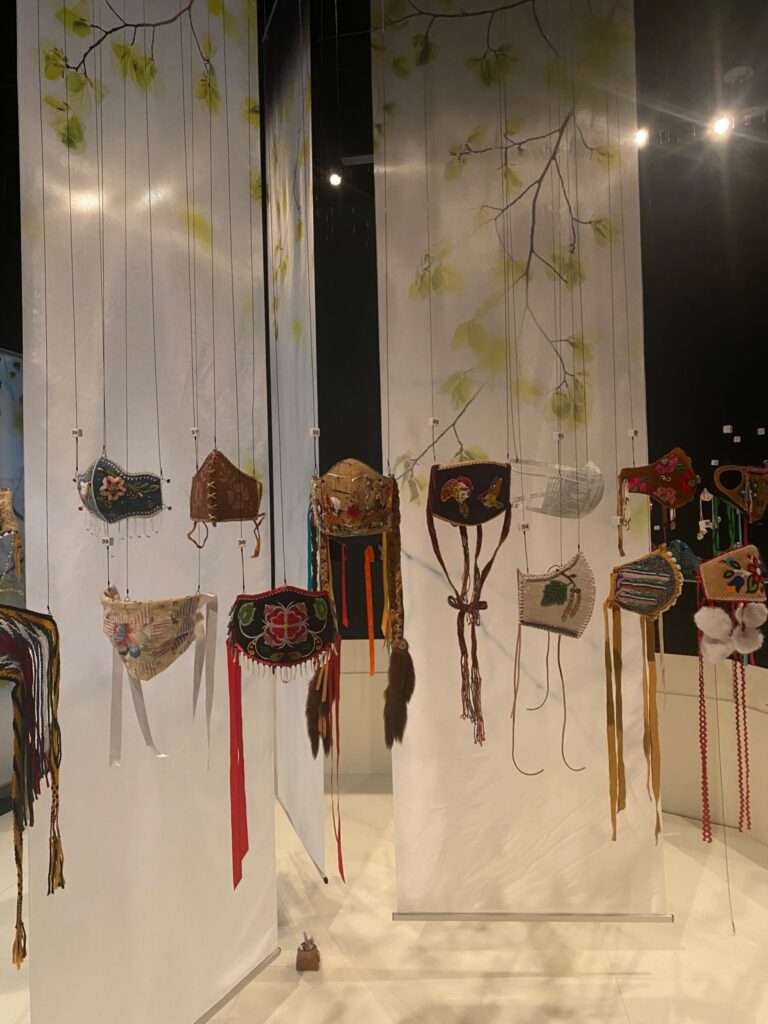
Mask photos
Images courtesy of the Royal Alberta Museum
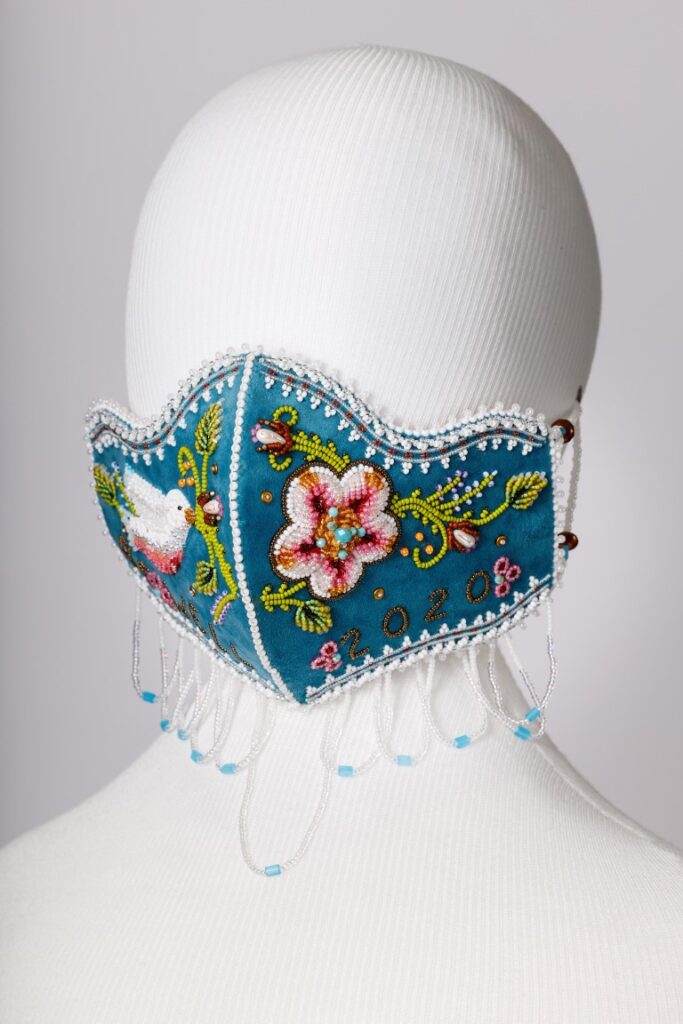
Lisa Sheperd – Be Well 2020
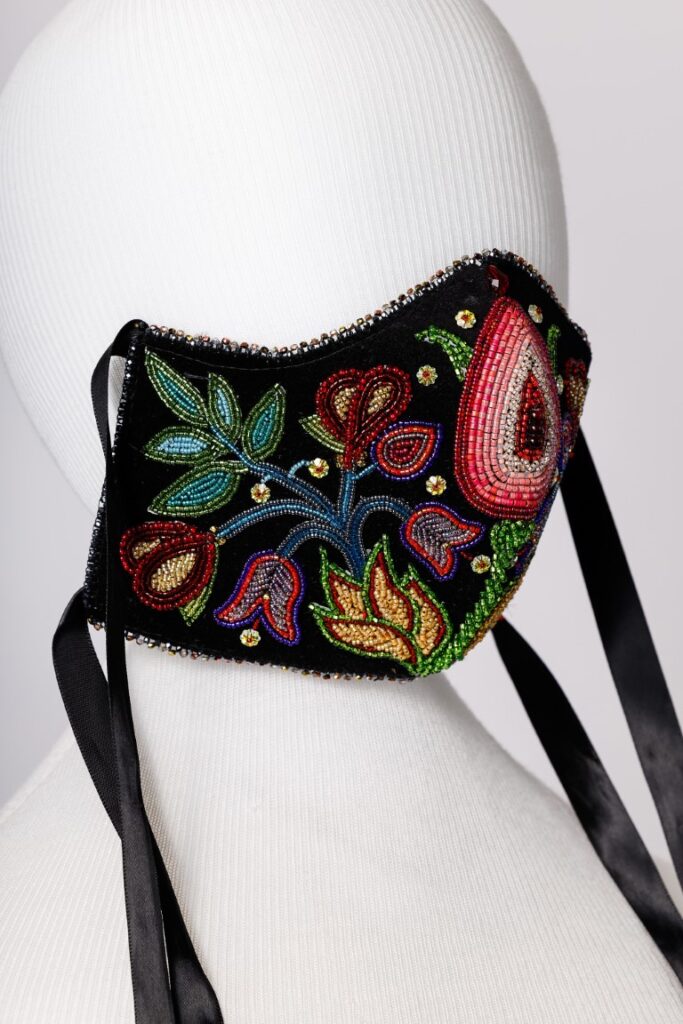
Natalie Bertin – Pandemic Vogue
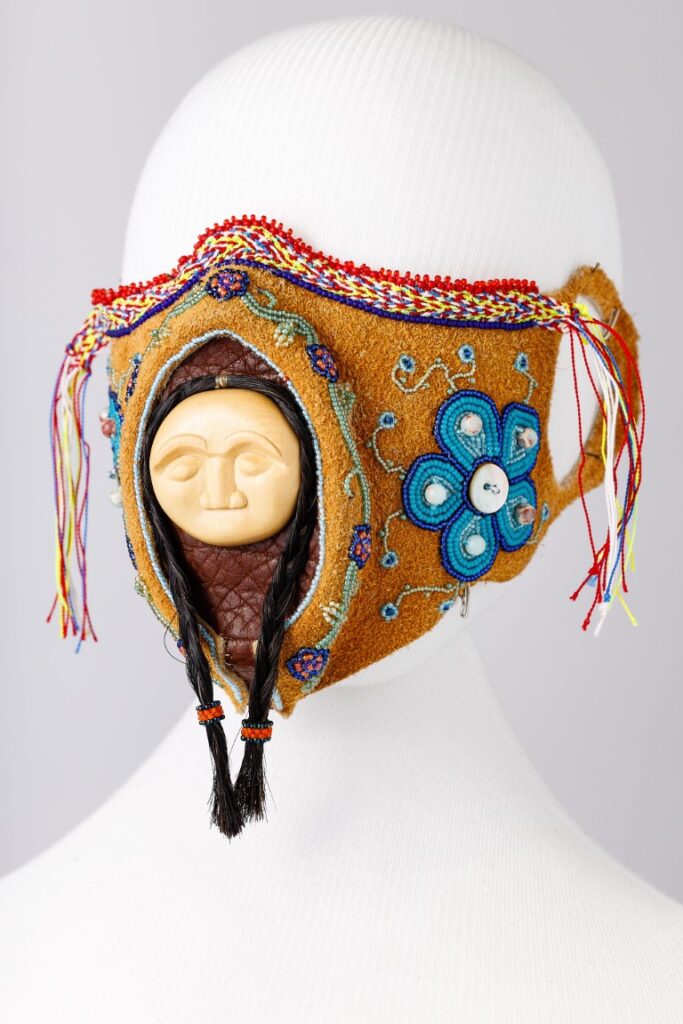
Adele Arseneau – Every Bead a Breath
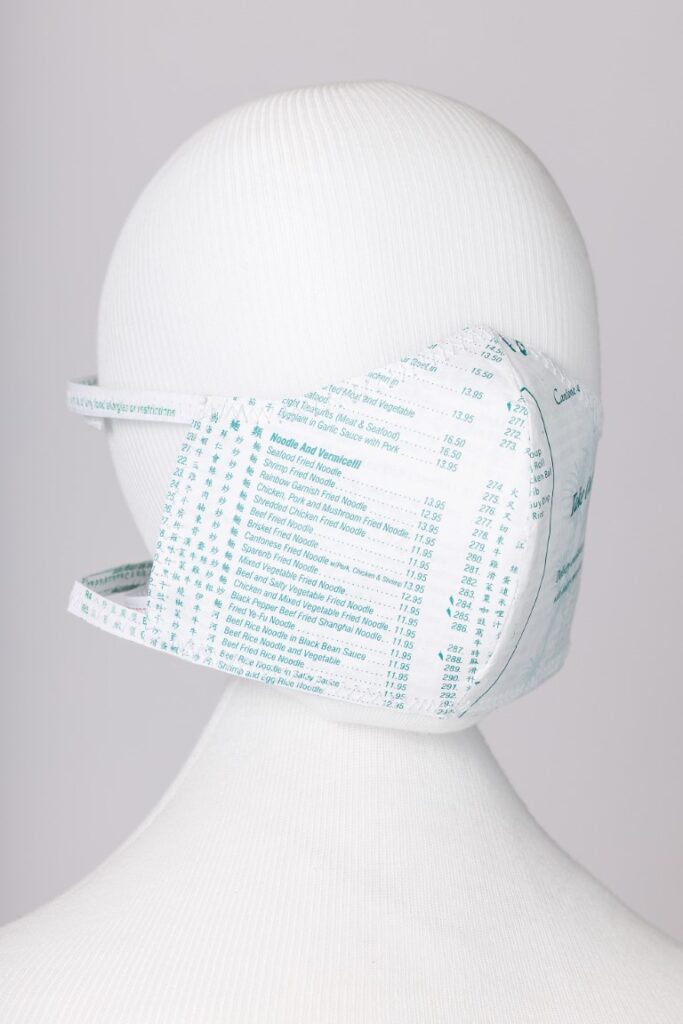
Don Kwan – Chinese Takeout Menu Mask
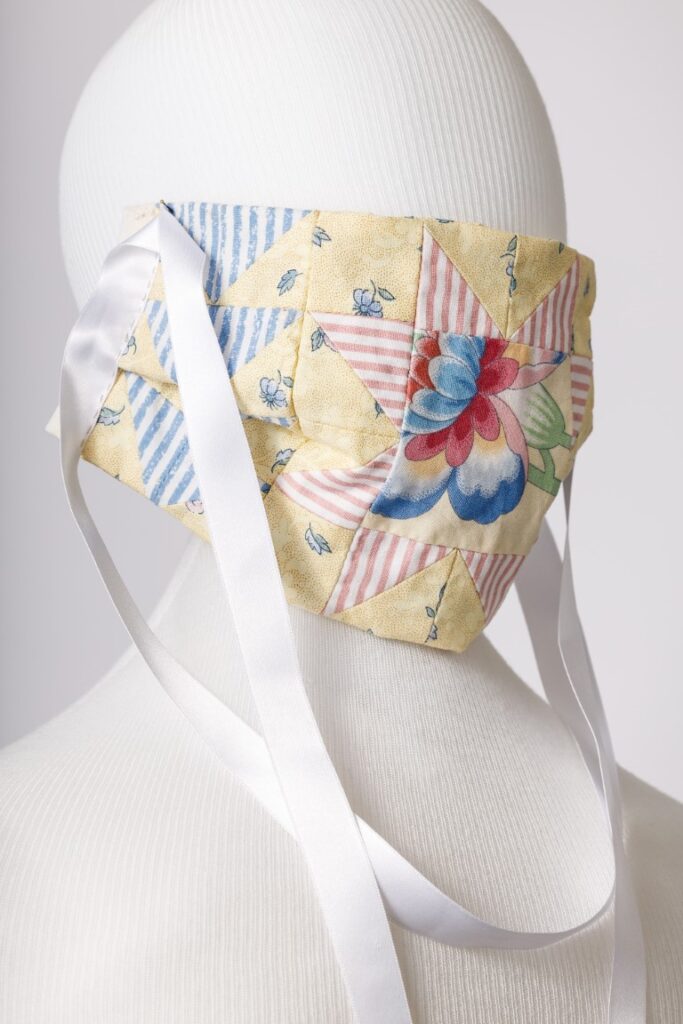
Beverly McNabb – Flying Geese and Morning Star
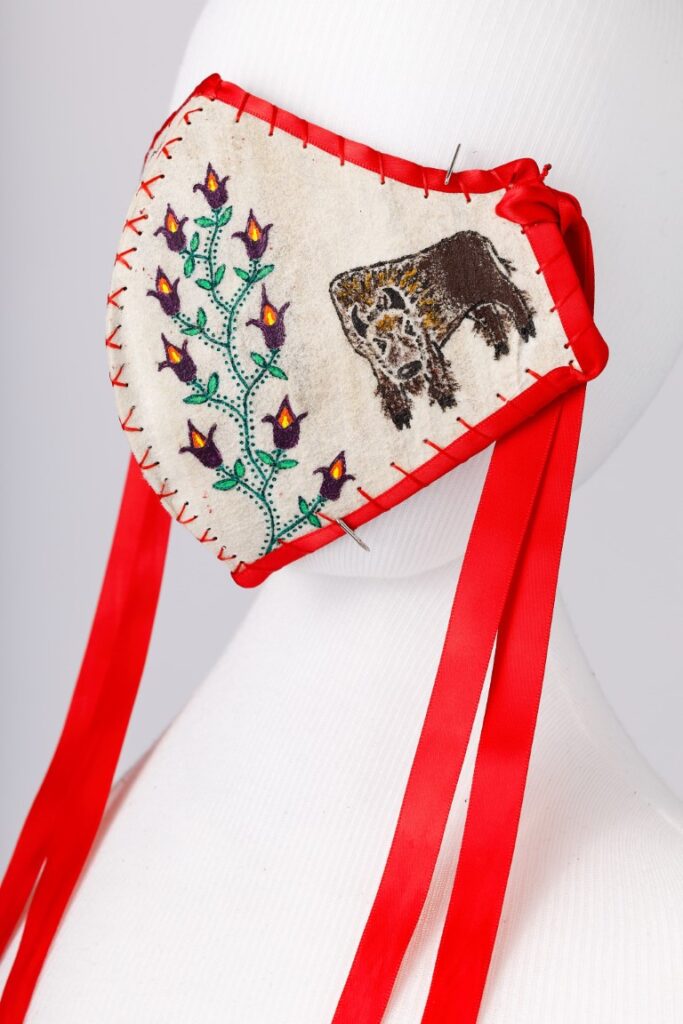
Joely Bigeagle – Kequahtooway
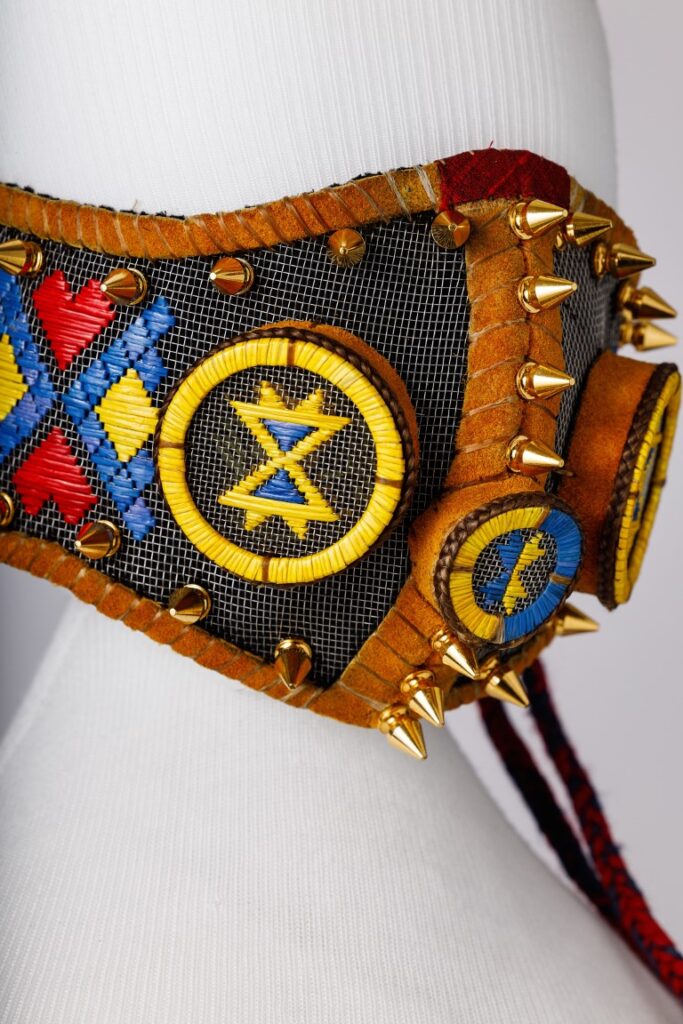
Graham Paradis – Quillpocalypse Now
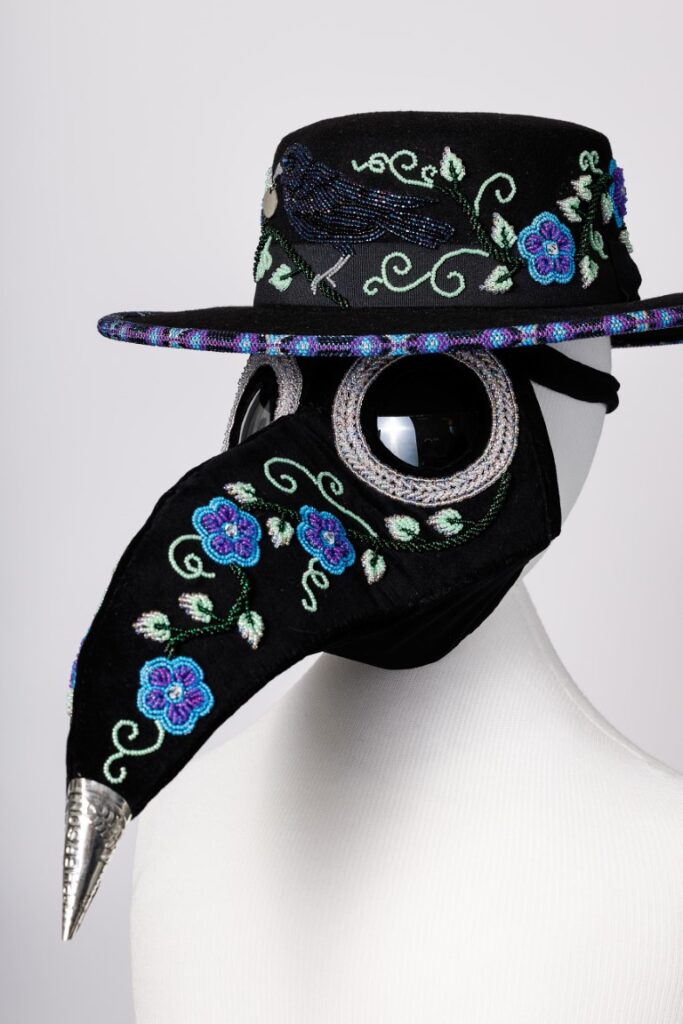
Towanna Miller – Corona Covid
